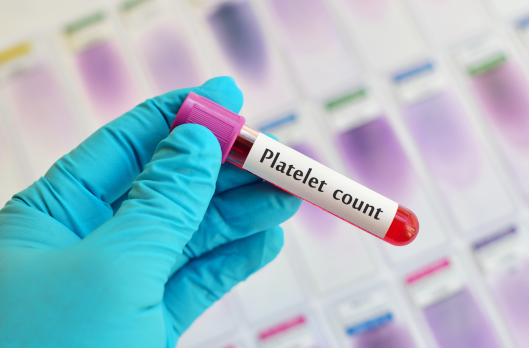(PRP Treatments) - Platelet Therapy, What to know before you go
Platelets, beyond their role in blood clotting, significantly influence the immune response by directly interacting with immune cells and releasing inflammatory mediators. They can activate and recruit immune cells, modulate the maturation and activation of cells like macrophages and dendritic cells, and even influence adaptive immunity by affecting T-cell responses.
Here's a more detailed look at how platelets affect immune response:
1. Direct Interactions with Immune Cells:
Platelet-leukocyte aggregates: Platelets can directly interact with leukocytes, forming aggregates that can trap pathogens and enhance immune cell activation.
Direct cell-cell contact: Platelets can interact with other immune cells via surface molecules, such as CD11b/CD18 on dendritic cells (DCs) and platelet junctional adhesion molecule C, leading to increased DC activation.
Release of soluble factors: Platelets release a variety of cytokines, chemokines, and other mediators that can stimulate immune cell function.
2. Modulation of Innate Immune Response:
Activation of innate immune cells: Platelets can activate innate immune cells like macrophages and neutrophils, enhancing their ability to phagocytose pathogens and release antimicrobial molecules.
Regulation of inflammation: Platelets release pro-inflammatory mediators that can attract and activate other immune cells, contributing to inflammation.
Antimicrobial activity: Platelets express pattern recognition receptors (PRRs) that can recognize pathogens and initiate immune responses.
3. Influence on Adaptive Immune Response:
Enhancement of antigen presentation: Platelets can interact with dendritic cells to enhance their ability to present antigens to T cells, leading to a more robust adaptive immune response.
Regulation of T-cell activation: Platelets can influence the expression of costimulatory molecules on DCs, such as CD80 and CD86, which are crucial for T-cell activation.
Direct T-cell stimulation: Platelets can also directly stimulate T cells, leading to their activation and proliferation.
4. Other Mechanisms:
Microparticles and microvesicles: Platelets release microparticles and microvesicles that can carry bioactive molecules and regulate immune responses.
Antimicrobial activity: Platelets express and release antimicrobial peptides that can directly kill pathogens.
Direct pathogen clearance: Platelets can capture and engulf pathogens, helping to clear them from the bloodstream.
What is a PRP injection?
Platelet-rich plasma (PRP) is produced from a person's own blood. It is a concentration of one type of blood cell (platelets), which is critical for blood clotting. This concentration is injected into an injured or diseased part of a person’s body to accelerate the healing of damaged tendons, ligaments, muscles, bones, and joints. A key advantage of PRP injections is that they can reduce the need for opioids or even over-the-counter anti-inflammatory medications. The use of anti-inflammatories should usually be ceased at the time of PRP treatment, because the platelet-rich plasma optimizes the initial inflammatory response involved with healing.
How are PRP injections performed?
PRP injections are prepared by taking anywhere from one to a few tubes of your own blood. It is then run ("spun down") in a centrifuge to separate the blood into its various components: red and white blood cells, plasma, platelets, etc. The platelets are collected and concentrated to anywhere from 2 to 8 times their normal number. The platelets are then mixed into a blood plasma liquid base and injected directly into the area of injury. Ultrasound imaging is sometimes used to guide the injection. The images below show a PRP injection into a patient's torn tendon. The ultrasound guidance is shown at left, and the injection is shown at right.
Do PRP injections have side effects or risks?
Side effects of PRP injections are very limited because the injections are created from your own blood, and your body should not reject them or react in any negative way. As with any injection, there is a remote risk of infection. Otherwise, there are no significant risks apart from the variability and unpredictability of how effective the treatment will be for a particular patient.
How to Boost Your Platelet Count without Injections
Tags : #platelets, #prp

